Sonus Paradisi
Billerbeck, 2014 [Hauptwerk]
Billerbeck, 2014 [Hauptwerk]
Não foi possível carregar a disponibilidade de recolha
Domorgel Billerbeck - Orgelbau Fleiter
The neo-gothic cathedral of Billerbeck (Germany), dedicated to the honor of St. Ludger, was built in 1892–98. In 2001, an association of friends and supporters of the St. Ludger organ was founded and funds were raised for the construction of a new, large organ. In 2008, Orgelbau Fleiter began to construct the organ, which was built in several stages and completed in 2014. The instrument has 72 speaking stops distributed across four manuals and pedal.
The organ has been designed predominantly in the French symphonic style, although it incorporates elements from other traditions so that the result is an eclectic universal organ. It has five divisions: four manuals and pedal.
Presented to you by Leonart Studio, your authorised reseller for Sonus Paradisi in Switzerland (shipped internationally). Get your digitally sampled historical organs for the use with the Hauptwerk virtual instrument software.
Share this Sample Set
![Billerbeck, 2014 [Hauptwerk]](http://artful.shop/cdn/shop/files/ss_billerbeck1.jpg?v=1692965831&width=1445)
![Billerbeck, 2014 [Hauptwerk]](http://artful.shop/cdn/shop/files/ss_billerbeck2.jpg?v=1692965832&width=1445)
![Billerbeck, 2014 [Hauptwerk]](http://artful.shop/cdn/shop/files/ss_billerbeck3.jpg?v=1692965831&width=1445)
![Billerbeck, 2014 [Hauptwerk]](http://artful.shop/cdn/shop/files/ss_billerbeck4.jpg?v=1692965832&width=1445)
![Billerbeck, 2014 [Hauptwerk]](http://artful.shop/cdn/shop/files/ss_billerbeck5.jpg?v=1692965832&width=1445)
![Billerbeck, 2014 [Hauptwerk]](http://artful.shop/cdn/shop/files/ss_billerbeck11.jpg?v=1692965831&width=1445)
Specification (stop list)
-
Manual I
Rückpositiv (expr.) C–c4
Principal 8'
Rohrflöte 8'
Salizional 8'
Unda maris 8'
Praestant 4'
Holzflöte 4'
Waldflöte 2'
Quinte 1 1/3'
Mixtur 4 f.
Sesquialtera 2 f.
Trompete 8'
Cromorne 8'
Tremulant -
Manual II
Hauptwerk C–c4
Grande Bourdon 32'
Violone 16'
Principal 16'
Principal major 8'
Praestant 8'
Viola da Gamba 8'
Flute harmonique 8'
Gedackt 8'
Oktave major 4'
Octave minor 4'
Flute conique 4'
Quinte 2 2/3'
Octave 2'
Cornet 5 f.
Mixture major 2'
Mixture minor 1'
Bombarde 16'
Trompete 8'
Tremulant -
Manual III
Schwellwerk (expr.) C–c4
Rohrbordun 16'
Doppelflöte 8'
Geigenprincipal 8'
Bourdon 8'
Viola 8'
Vox coelestis 8'
Principal 4'
Flute octaviante 4'
Fugara 4'
Nazard harm. 2 2/3'
Octavin 2'
Tierce (harm.) 1 3/5'
Fourniture 5 f.
Basson 16'
Trompete harm. 8'
Hautbois 8'
Voix humaine 8'
Clairon 4'
Carillon
Tremulant -
Manual IV
Chamaden C–c4
Trompeta magna 16'
Trompeta real 8'
Trompeta clarin 4'
Cornet 5f
Flute harmonique 8'
Vox Ludgeri 8'
Note: Vox Ludgeri is affected by the tremulant of Schwellwerk. -
Pedal
Pedal C–g1
Grand Flute 32'
Bourdon 32'
Principalbass 16'
Flute 16'
Contrabass 16'
Soubasse 16'
Octavbass 8'
Flute 8'
Cello 8'
Bourdon 8'
Choralbass 4'
Viola tenore 4'
Contrebombarde 32'
Posaune 16'
Fagott 16'
Trompettenbass 8'
Clairon 4' -
Other specification
Couplers:
III/I, IV/I, Sub III/I, Super III/I I/II, III/II, IV/II, Sub III/II, Super III/II IV/III, Sub III/III, Super III/III, Aequallage ab (all supercouplers are sounding to the highest tone, i.e. "ausgebaut") I/Ped, II/Ped, III/Ped, IV/Ped, Super I/Ped, Super II/Ped. Cantus II/Ped 2', Super III/Ped
Accessories:
Carillon accessible from all manuals and the pedal. See "features" for more on this.
Swells:
Rückpositiv and Schwellwerk are both enclosed. Vox Ludgeri on the original instrument shares the Schwellwerk enclosure. For the sample set, a new swellbox for the Chamadenwerk was constructed, driven by an independent virtual swell pedal. Since the horizontal trumpets are inside the organ case in Billerbeck (not displayed), it may be a unique opportunity to enclose them into a swell box, at least virtually. All the sudden, the division is not simply a loud Chamadenwerk, but also an Echo, if desired.
History
Domorgel Billerbeck - Orgelbau Fleiter
The neo-gothic cathedral of Billerbeck (Germany), dedicated to the honor of St. Ludger, was built in 1892–98. At that time, only a small organ was supplied because of the lack of funds. The organ had 32 stops and was built by Friedrich Fleiter from Münster. The historic organ case is still preserved today. In 1948, the organ was enlarged to 42 stops. The original two-manual organ console was re-used in the church of Aulendorf, where it remains today.
In 2001, an association of friends and supporters of the St. Ludger organ was founded and funds were raised for the construction of a new, large instrument. In 2008, Orgelbau Fleiter began to construct the organ, which was built in several stages and completed in 2014. Orgelbau Friedrich Fleiter was established in 1872 in Münster, and it has supplied numerous organs to churches of the Münster area for the past 150 years. Since 2007 the company is directed by Eberhard Hilse, who was the designer of the present Billerbeck organ. The instrument has 72 speaking stops distributed across four manuals and pedal.
The organ has been designed predominantly in the French symphonic style, although it incorporates elements from other traditions so that the result is an eclectic universal organ. It has five divisions: four manuals and pedal. The Hauptwerk and Chamadenwerk are located in the organ case on the right side (north side). The Schwellwerk is in the case on the left (south side). The Pedal sits at the back, behind both the historical cases and offers, among other stops, three 32' voices. The Rückpositiv on the balustrade of the organ gallery is enclosed in a swell box and contains 12 voices of mixed (French and German) traditions. The Hauptwerk and Schwellwerk voices were inspired by the French style of voicing developed by A. Cavaillé-Coll. The flutes of the Schwellwerk, including the mutations (aliquotes), are made of overblowing pipes. The Chamadenwerk offers solo stops in addition to the en chamade trumpets, namely the Vox Ludgeri, a clarinet-like reed, and the Flûte harmonique.
Special thanks to: Kantor Lukas Maschke, Martin Kondziella, and Eberhard Hilse.
Photo of the organ prospekt: Orgelbau Fleiter.
Features
Encryption
The samples are offered in 48kHz/24bit resolution. The multiple releases have three levels: short, mid and long. Hauptwerk v. 4.2 and higher supported. The sample set is offered in a plain wave format, no encryption.
Reverb time
The reverb time up to 6.5 seconds.
Keyboards, pedalboard
The original compass of the keyboards is 58 keys (C–a3). It was extended in Hauptwerk to 5 full octaves C-c4 . The original compass of the pedal division is 32 keys (C-g1).
Tremulants
All ranks were recorded with and without tremulants where available for the most convincing tremulant behavior. However, loading the authentic tremmed ranks consumes large amount of RAM. It is possible to select to use the artificial tremulant instead to save RAM (the switch is located on the mixer tab).
Surround format
The sample set is offered in a Surround variant (6 channels). There are four front channels and two rear channels. The front and rear audio channels can be mixed or used separately - depending on the preferences of the user. A dedicated "mixing desk" is available in Hauptwerk to mix the sound to the desired level. In addition to that, there are 2 semi-dry channels. These may be used stand-alone, or may be added to the 6 surround channels as additional (very) direct channels, forming an 8 channel sample set. Any mix of channels is possible depending on the personal user preferences. However, it probably makes little sense to combine the semi-dry and the direct channels. Rather, the semi-dry channels could be used instead of the direct channels for even higher portion of the direct sound in the mix.
To reproduce the surround format, an audio card with at least 4 output channels is required, dedicating the front channels to the front speakers, and the rear channels to the rear speakers.
Stoplist Accessories:
Carillon accessible from all manuals and the pedal. The original instrument has one carillon shared on all manuals. For the sample set, the carillon of the Schwellwerk is virtually separate, enclosed in the swell box and milder in voicing than the virtual carillon shared by the other divisions.
Extensions:
The real organ has many extensions and transmissions. For the sample set, I decided to record stops several times, so that almost all extensions and transmissions are gone, almost each stop is independent, with its own character. However, several extensions remained in the Pedal.
Burdon 8 of the Pedal is the transmission of the HW Bourdon 32, from the middle c up. Voicing Bourdon 8 of Pedal is therefore done together with voicing of the descant of the HW Bourdon 32.
Subbass 16 of the Pedal is the extension of the Pedal Bourdon 32. Voicing Subbass is done together with voicing of the PED Bourdon 32, only an octave higher.
Flute 32 and Flute 8 of Pedal are independent stops. But Flute 16 is formed as follows: First octave and half (CC-g0) is the Flute 32 an octave higher, the rest is from the Flute 8. Voicing Flute 16 is done by voicing the Flute 32 and Flute 8 of the pedal.
Swells:
Rückpositiv and Schwellwerk are both enclosed. Vox Ludgeri on the original instrument shares the Schwellwerk enclosure. For the sample set, a new swellbox for the Chamadenwerk was constructed, driven by an independent virtual swell pedal. Since the horizontal trumpets are inside the organ case in Billerbeck (not displayed), it may be a unique opportunity to enclose them into a swell box, at least virtually. All the sudden, the division is not simply a loud Chamadenwerk, but also an Echo, if desired.

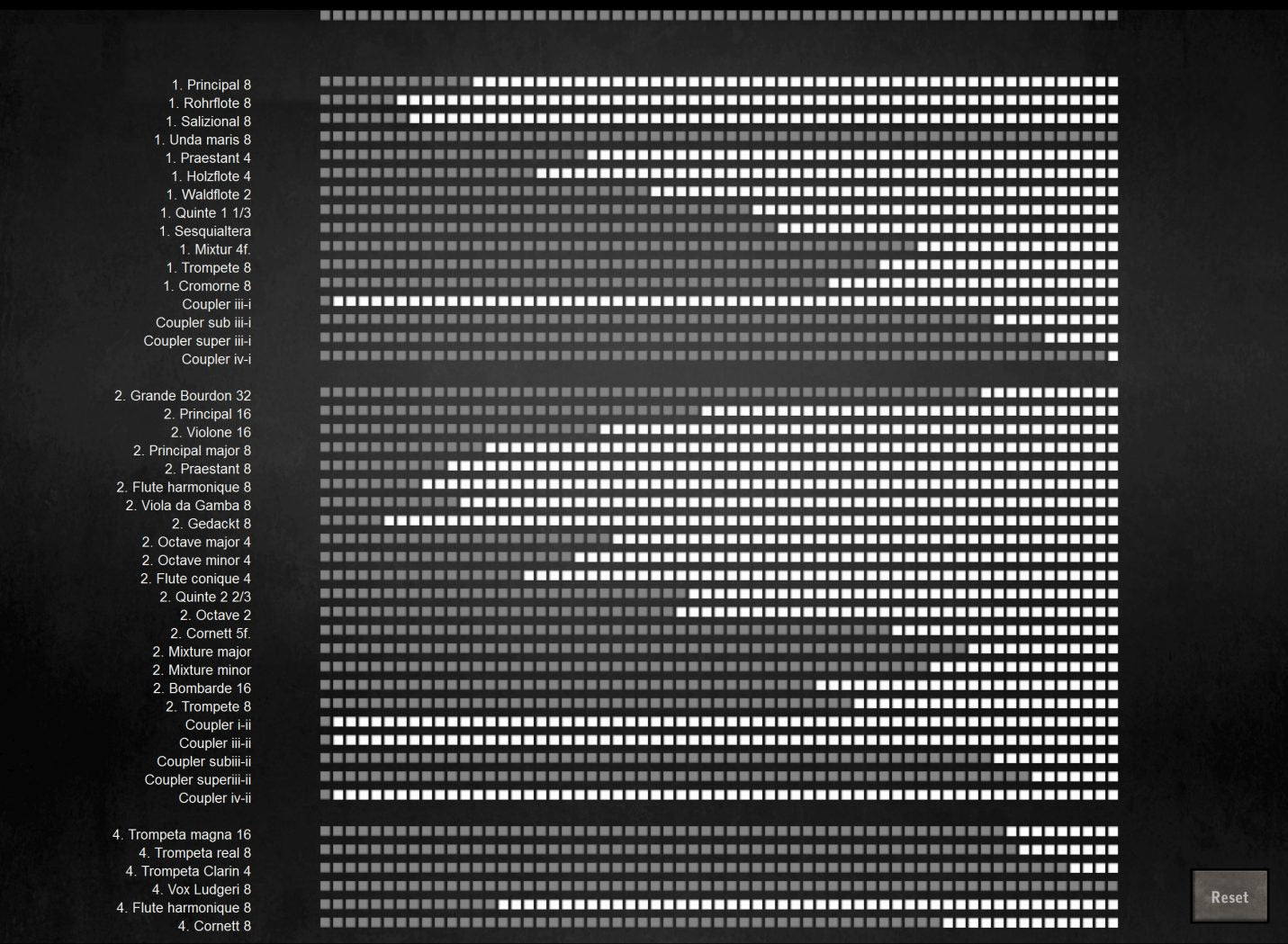
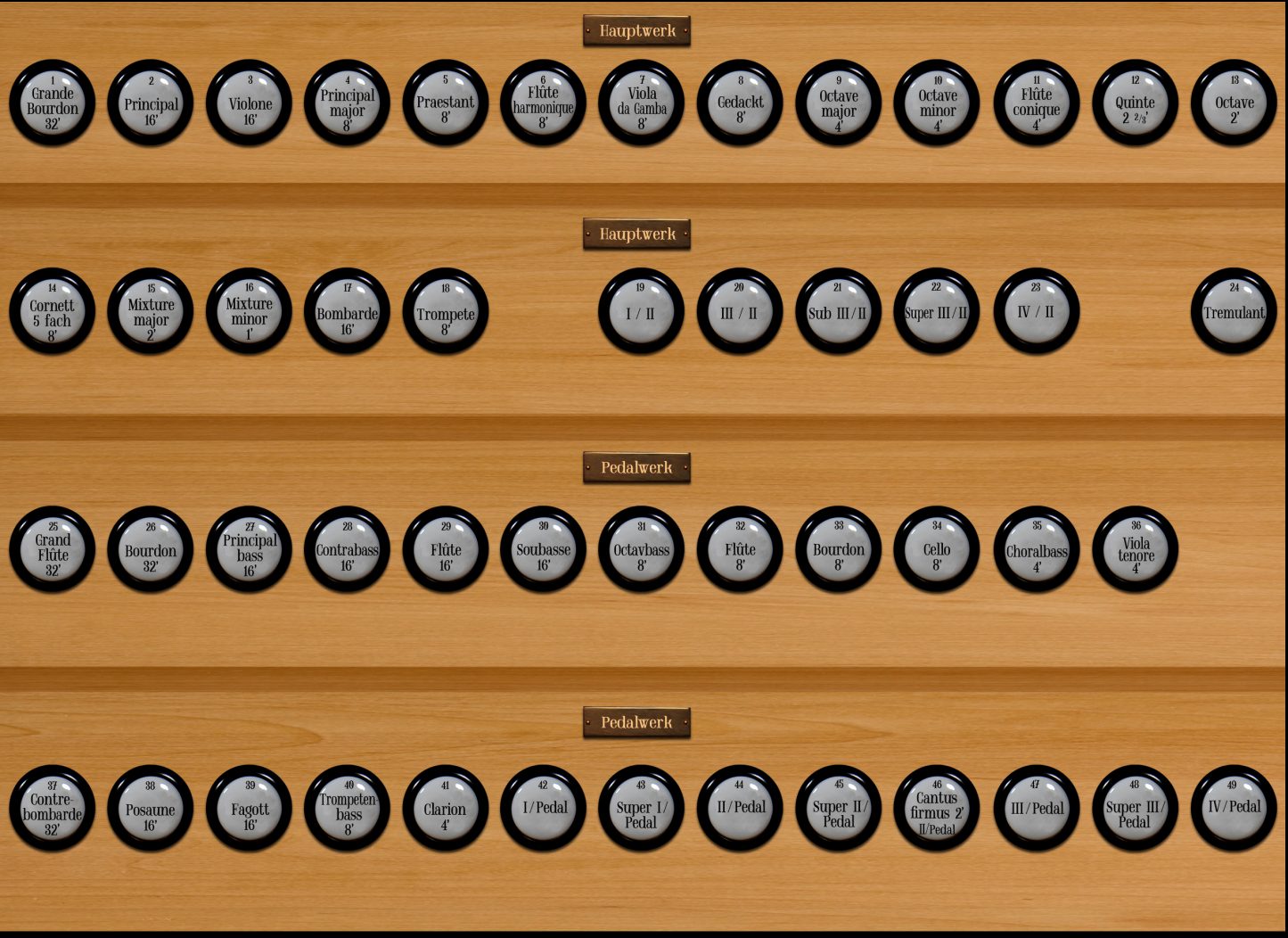
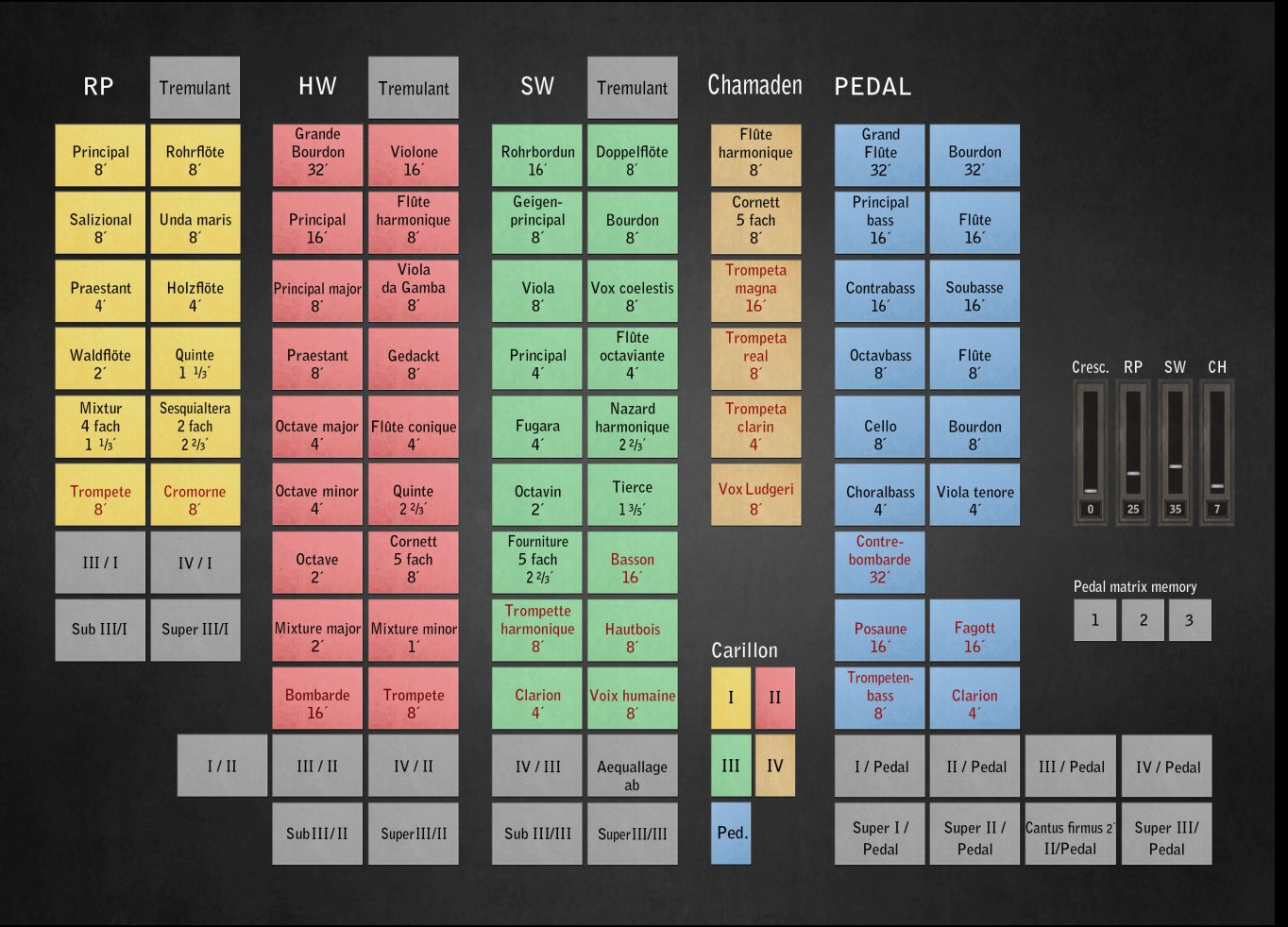
Requirements
Hauptwerk v. 4.2 and higher supported.
RAM consumption: 6-channel surround (Vol1 + Vol2)
16-bit, other settings default: 44 GB
20-bit, other settings default: 79 GB
24-bit, other settings default: 86 GB
RAM consumption: 6-channel surround - with the tremmed-ranks disabled
16-bit, other settings default: 29.9 GB
20-bit, other settings default: 52.7 GB
RAM consumption: 8-channel surround (Vol1 + Vol2 + Vol 3)
16-bit, other settings default: 63.5 GB
20-bit, other settings default: 114 GB
24-bit, other settings default: 124 GB
RAM consumption: 2-channel semi-dry (Vol3)
16-bit, other settings default: 17 GB
20-bit, other settings default: 29 GB
24-bit, other settings default: 31 GB
Screen resolution 1280x1024 px or more.
Polyphony of 6000 voices recommended for the full suround (4000 pipes minimum).
This Hauptwerk Sample Set is presented to you by Leonart Studio, an authorised reseller for the manufacturer Sonus Paradisi in Switzerland (shipping internationally). Enjoy this digitally sampled organ library for the use with Hauptwerk software and start expanding your historical organ collection today.
0
Total de itens
CHF 0.00
Subtotal dos produtos
More Hauptwerk Sample Sets
-
Casavant, 1995 [Hauptwerk]
Fornecedor:Sonus ParadisiPreço normal CHF 174.90Preço normalPreço unitário / por -
Reuter, 1928 [Hauptwerk]
Fornecedor:Sonus ParadisiPreço normal CHF 473.00Preço normalPreço unitário / por -
![Rotterdam Hoofdorgel, 1973 [Hauptwerk]](//artful.shop/cdn/shop/files/ss_RotterdamMain1.jpg?v=1693279529&width=533) Em promoção
Em promoçãoRotterdam Hoofdorgel, 1973 [Hauptwerk]
Fornecedor:Sonus ParadisiPreço normal A partir de CHF 330.00Preço normalPreço unitário / porCHF 958.10Preço de saldo A partir de CHF 330.00Em promoção -
![Groningen, 1450-1740 [Hauptwerk]](//artful.shop/cdn/shop/files/ss_Groningen1.jpg?v=1693275425&width=533) Em promoção
Em promoçãoGroningen, 1450-1740 [Hauptwerk]
Fornecedor:Sonus ParadisiPreço normal A partir de CHF 658.90Preço normalPreço unitário / porCHF 1,681.90Preço de saldo A partir de CHF 658.90Em promoção -
Goerlitz, 2006 [Hauptwerk]
Fornecedor:Sonus ParadisiPreço normal A partir de CHF 328.90Preço normalPreço unitário / por -
Bückeburg, 1997 [Hauptwerk]
Fornecedor:Sonus ParadisiPreço normal A partir de CHF 1.10Preço normalPreço unitário / por -
Brasov, 1839 [Hauptwerk]
Fornecedor:Sonus ParadisiPreço normal CHF 418.00Preço normalPreço unitário / por -
![St. Omer, 1717-1855 [Hauptwerk]](//artful.shop/cdn/shop/files/ss_omer1.jpg?v=1692904128&width=533) Em promoção
Em promoçãoSt. Omer, 1717-1855 [Hauptwerk]
Fornecedor:Sonus ParadisiPreço normal CHF 323.40Preço normalPreço unitário / porCHF 410.96Preço de saldo CHF 323.40Em promoção -
Stellwagen organ, St. Marien, Stralsund (1659)
Fornecedor:Sonus ParadisiPreço normal CHF 858.00Preço normalPreço unitário / por -
![Clavichord Model [Hauptwerk]](//artful.shop/cdn/shop/files/ss_clavichord.jpg?v=1724310155&width=533) Esgotado
EsgotadoClavichord Model [Hauptwerk]
Fornecedor:Sonus ParadisiPreço normal CHF 33.00Preço normalPreço unitário / por




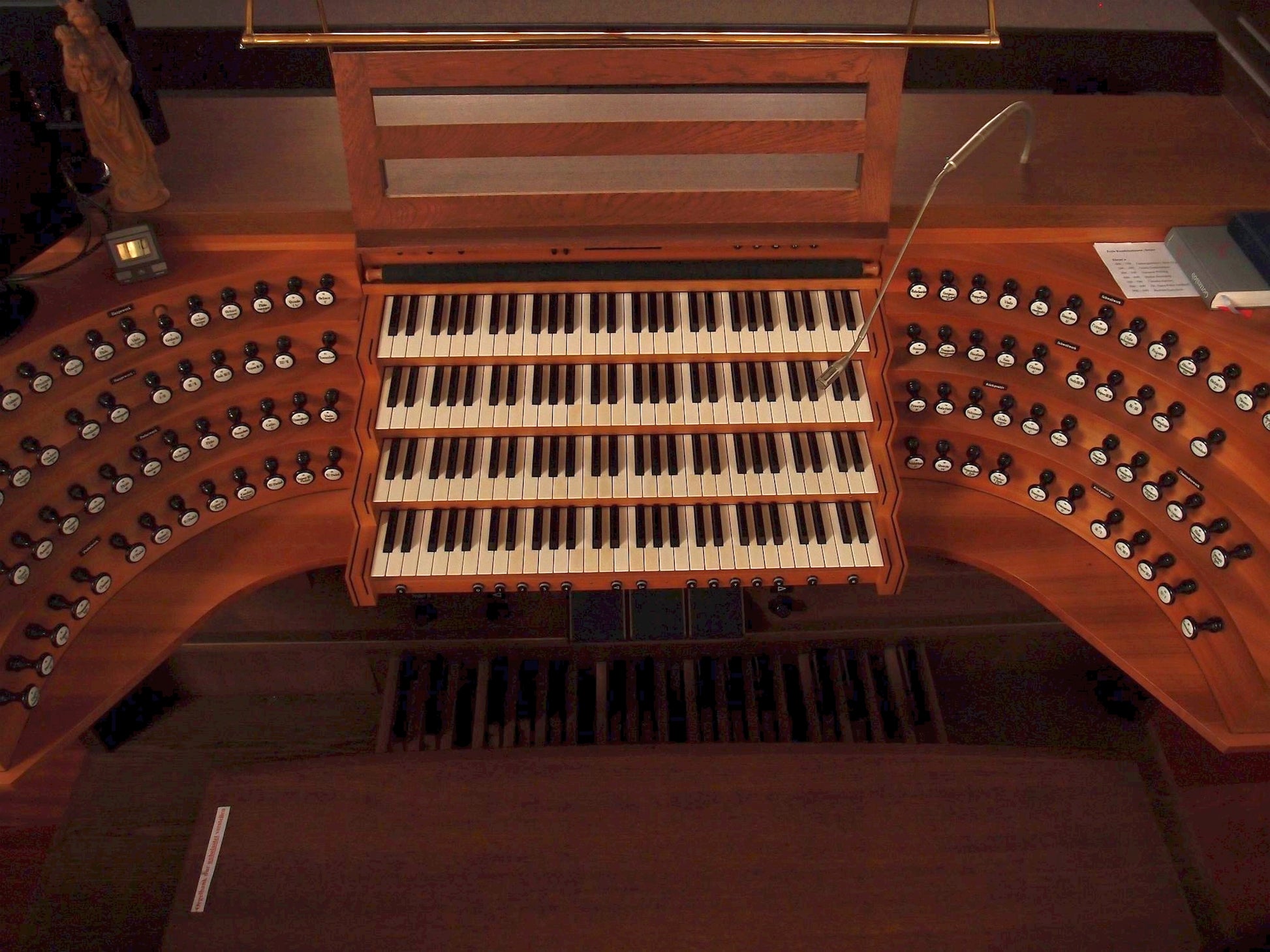


![Casavant, 1995 [Hauptwerk]](http://artful.shop/cdn/shop/files/ss_casavant1.jpg?v=1693319885&width=533)
![Reuter, 1928 [Hauptwerk]](http://artful.shop/cdn/shop/files/ss_Reuter1.jpg?v=1693321024&width=533)
![Rotterdam Hoofdorgel, 1973 [Hauptwerk]](http://artful.shop/cdn/shop/files/ss_RotterdamMain1.jpg?v=1693279529&width=533)
![Groningen, 1450-1740 [Hauptwerk]](http://artful.shop/cdn/shop/files/ss_Groningen1.jpg?v=1693275425&width=533)
![Goerlitz, 2006 [Hauptwerk]](http://artful.shop/cdn/shop/files/ss_goerlitz1.jpg?v=1692995837&width=533)
![Bückeburg, 1997 [Hauptwerk]](http://artful.shop/cdn/shop/files/ss_bueckeburg1.jpg?v=1692967628&width=533)
![Brasov, 1839 [Hauptwerk]](http://artful.shop/cdn/shop/files/ss_brasov1.jpg?v=1692967057&width=533)
![St. Omer, 1717-1855 [Hauptwerk]](http://artful.shop/cdn/shop/files/ss_omer1.jpg?v=1692904128&width=533)
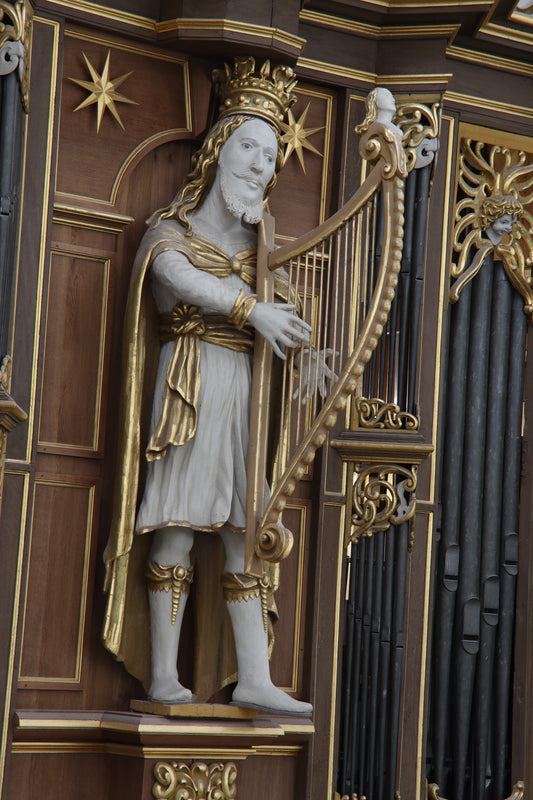
![Clavichord Model [Hauptwerk]](http://artful.shop/cdn/shop/files/ss_clavichord.jpg?v=1724310155&width=533)